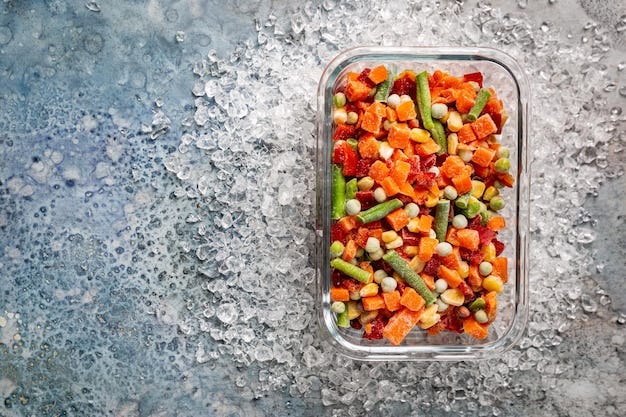Sick of half your grocery bill going to waste, rotting in the back of the fridge? Out of sight is out of mind, and somehow it’s always the most expensive items that find their way to the back of the fridge.
I’m personally tired of throwing away thousands of dollars worth of food every year. Not to mention the food waste.
However, keeping up a healthy lifestyle full of fresh foods can be difficult without risking them rotting. But instead of reaching for packaged, ultra-processed products to avoid waste; I’ve put together five easy tips to stop wasting food while still eating fresh.
1: Know What You Actually Need

I get it: you saw a TikTok about a viral banana-baked oats recipe you’re dying to try. By all means, you should! But when you go to buy a full bunch, ask yourself: are you actually prepared to eat a banana every day for the next week? Because that’s about how long you have before they start to rot.
Impulse buying comes for us all. You see a new fruit you want to try, or have a sudden strike of inspiration to rehaul your entire week. But that slowly growing collection in our cart is usually the cause of either:
A: Overconsumption: We eat way more than we need, or even want, to avoid waste.
Or
B: It just goes bad, anyway.
That’s why before any grocery trip, you need a game plan. Put together a list of meals you want to make for the week, and try to utilize as many of the same ingredients as you can. That doesn’t mean you have to mass meal prep the same chicken and broccoli for 7 nights in a row; but making new and interesting combinations with the same core cast of items!
This drastically cuts down your list to the essentials, saving you money, time, stress, and above all: waste.
2: Proper Storage

Did you know you should always store your fresh herbs in water? Same with your spring onions, asparagus, and celery? This simple trick can take your vegetables from lasting a few days to more than a week.
Learning how to store your food is the best way to elongate the lifespan of what you have. I always recommend doing a quick search for the specific item you bought before putting it away, but for a quick, general guide:
- Wait to wash your fruits or vegetables until right before you use them. Pre-washing them without thoroughly drying them after with a salad spinner can lead to premature spoilage.
- Anything stored with apples will spoil faster, so make sure your apples are either sealed in a bag or in their own drawer.
- Make sure any leafy vegetables, cabbage, brussels sprouts, winter root vegetables like parsnips and beets, and brassica vegetables like cauliflower or broccoli, are all stored in your ‘crisper’ drawer. This may be labeled as your ‘fresh’ or ‘vegetable’ drawer in your fridge. ‘
3: Don’t Fear the Freezer
Eating your greens is important; but did you know frozen vegetables are often the best raw option? Frozen veggies are preserved at their peak freshness. Often, they contain more nutrients than their fresh counterparts in the grocery store due to travel time degrading their nutrients.
A lot of us have a fear of frozen fruits and vegetables, but they can be the simplest and most effective solution to encourage healthy eating without risking your fresh produce going bad!
Try freezing mixed berries for on-the-go smoothie packs, or combinations of vegetables you love in stir-fries as pre-made packs to pop in the pan for some easy meals that can last for months.
The Takeaway?

You can still eat healthy without risking massive food waste. By adopting these simple yet effective tips, you’ll not only save money by making more from what you buy, but also enjoy fresher, more delicious produce overall.
For more great tips and strategies for maximizing your grocery list for health, sustainability, and affordability, check out my Youtube Channel for hundreds of free and easy guides.







